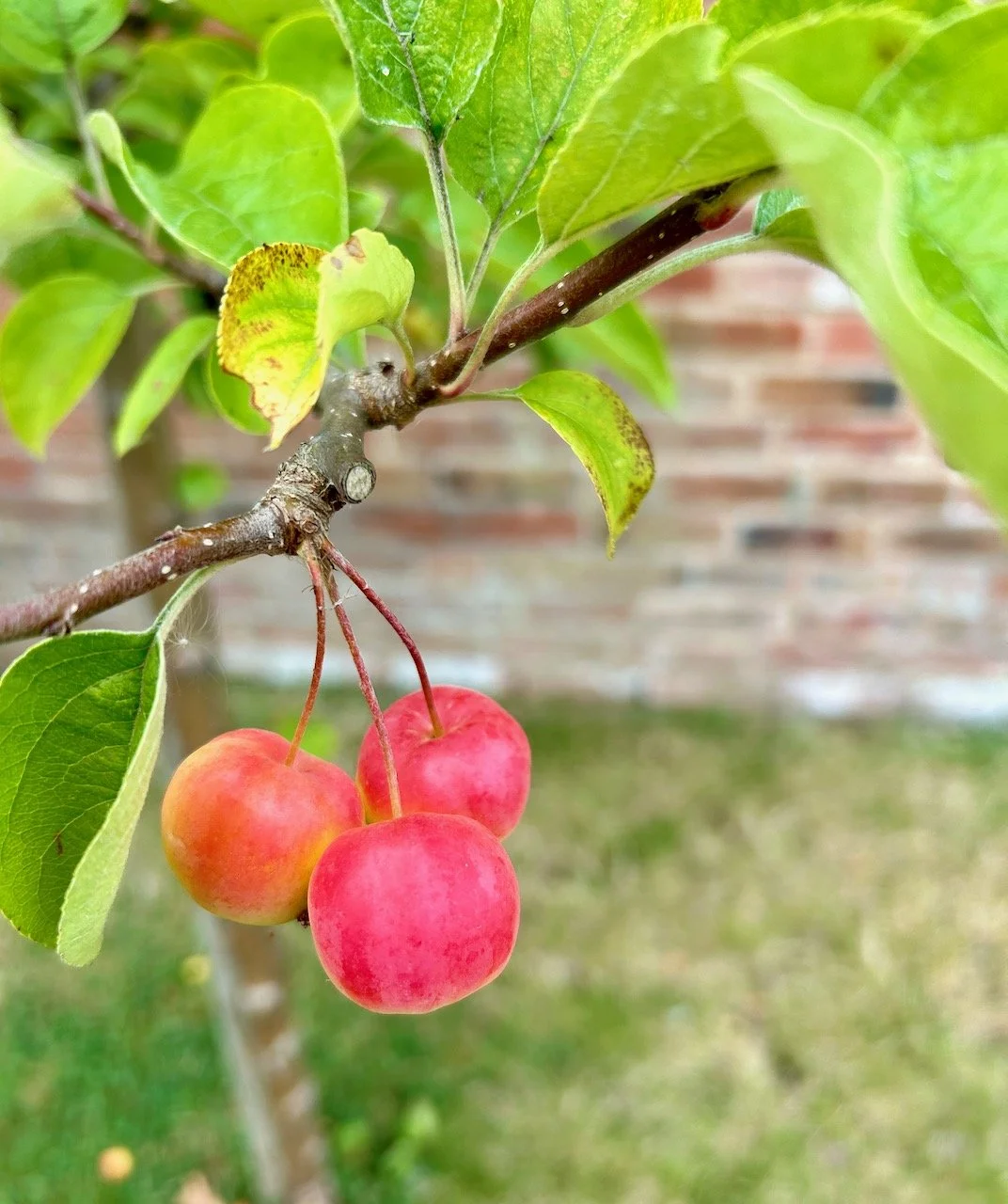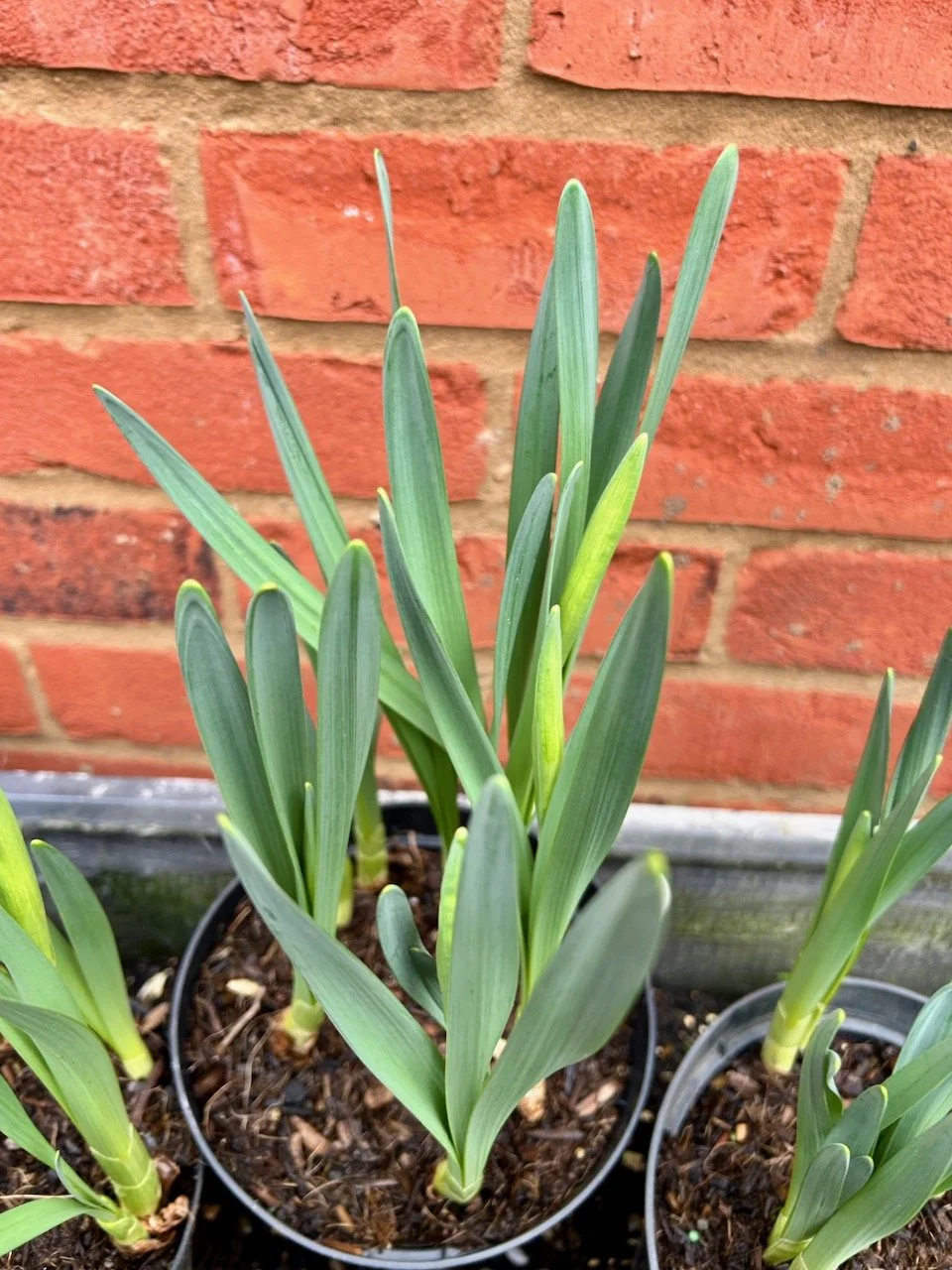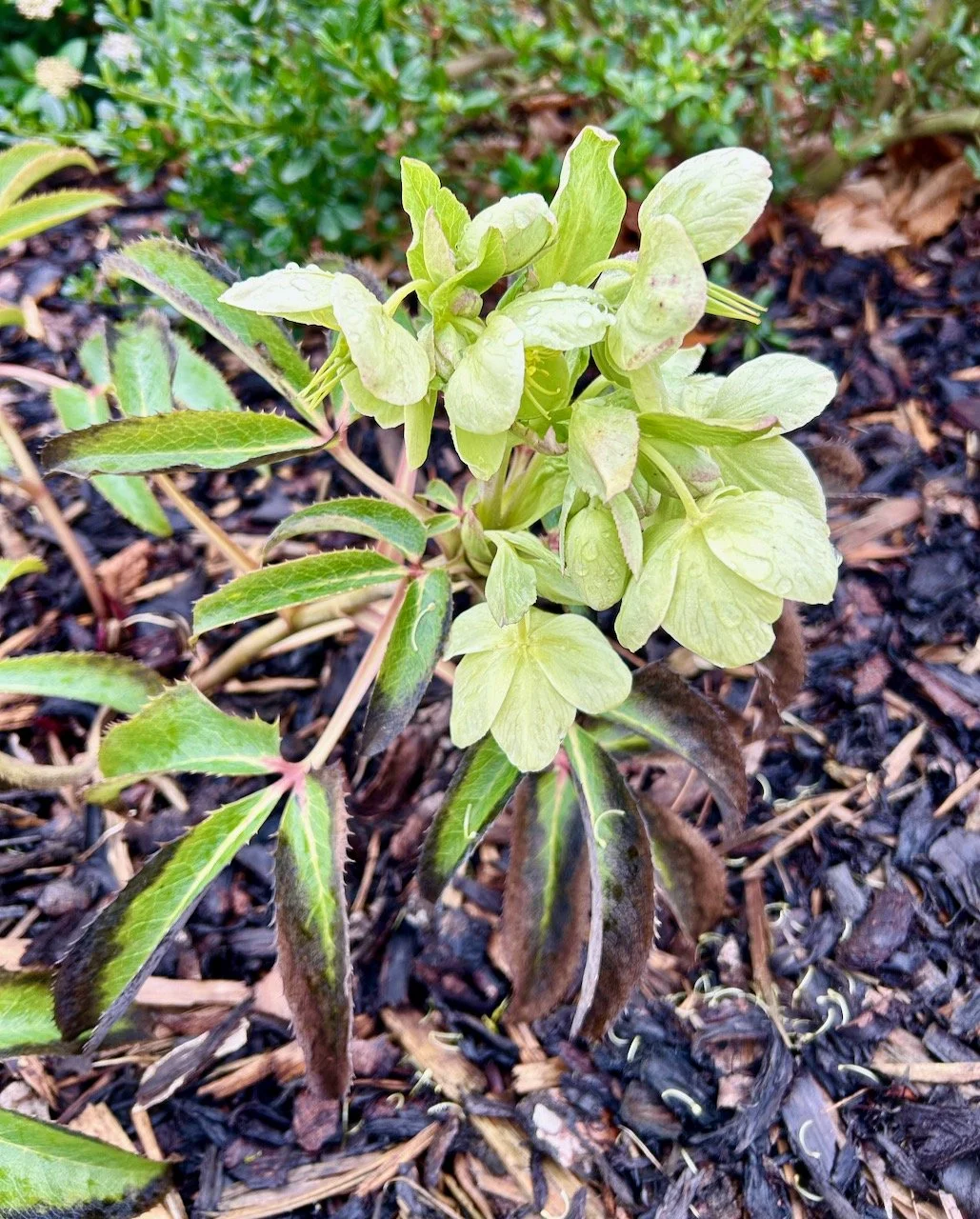The weather in February has been just as dire and uninspiring as in January’s update, and I’ve not been tempted into the garden for anything more than taking some photos and moving some daffodils onto the patio so we don’t miss them flowering. But the good thing about our new garden is that we see a lot more of it from the house as every room pretty much has a vista over the garden and we walk through it every time we go out, so that alone brings plenty of opportunity to see what’s going on.
And in summary, that’s quite a bit for this month - hellebores, daffodils and even a few weeds!
Let’s start with the daffodils, they’ve come on so much.
AT THE START OF THE MONTH
Once I’d spotted that the new daffodils were peeking through the soil and gaining height, they became a regular waypoint on the way to the car, and by the middle of the month after being looked at a great deal the flower buds started to develop. Though I was still in for a long wait for further developments, but I can wait (mostly).
FLOWERS DEVELOPING MID-MONTH
BY THE END OF THE MONTH THEY WERE ALMOST THERE, ALMOST!
By the end of the month I was sure that flowering was imminent, and I didn’t want to miss it by leaving them alongside the garage and nestled against the wall where they’d spent the winter months. So despite being full of cold I moved them, arranged them and rearranged them several times to get them in prime position.
I’ve taken to growing my bulbs in smaller flower pots so that I can move them around and add them to some terracotta pots when they’re in bloom (or about to be) - that approach worked well for the tulips in our last garden and it’s something I’ve done for the first time with the daffodils we bought from the garden centre here in the autumn. I’m hoping it gives me the flexibility to have some colour on the patio without necessarily tying up pots for bulbs when they’re dormant, or have gone over.
The errant daffodils (which were the ones I was late to plant) have also been checked on, and they’re still errant but are still growing - they’ll be the crazy gang members of the daffodil world this year I’m sure!
Other plants which we brought with us (and haven’t potted out yet) are also doing well - the early flowering elephants ears did just that, and their burst of pastel pink among the shrubs, where I’d hidden the pots for protection over winter, was very welcome.
The euphorbias and tulips enjoyed bursts of February sunshine, almost appearing to dance with glee in the warmth - and quite honestly, I know how they felt. It was also good to see the geraniums which originally came from my FIL’s garden come back, I’m less keen to see the grass they seem to have acquired, but at least its still in a pot so should be relatively easy to resolve at some point.
The rhubarb is a bit of a star, already I can see some delicate red stems which glistened in the sun. It’s coping well with being in the pot, and sharing that with some lords and ladies, and I expect it will do even better when its planted out when the soil warms up a little. Though of course that means no cropping for a while, but I think it’ll be worth the wait.
The mahonias continue to look majestic and they’ve added some great structure to the flower bed over winter, their yellow flowers are no more but berries with a blueish tinge are starting to appear - I think there’s more to come from this new-to-me plant yet.
The red robin bushes have also been much welcomed during the greyer days, and they’ve held up well with their gorgeous red tips - as well as this one, there’s one in the outside border which makes me smile every time I drive in.
And remember that buddleia that brought so many butterflies to the garden last summer, and the one I was tempted to cut down and move slightly? Well I gave it a hard prune instead, and already it’s back and growing well - I shouldn’t have been quite so worried about it should I?! I’ve also removed many seedlings from the gravel, so it seems I was never going to be without one, which is absolutely fine by me.
I thought the deep maroon hellebore that we brought with us was a goner when I looked at it early in the month, it had lost most of its leaves and gained a lot of weeds, but I was pleased to be proven wrong as it’s given us the most beautiful deep coloured flowers as it usually does.
But this year it’s been joined by a hellebore in the border which is aiming to steal the show with its creamy green flowers which really does pop against the bark mulch. I’m hoping that both of them are happy enough to drop seeds which in turn are happy enough to develop into more plants!
And weeds, they’re starting. We’re seeing a lot more in the gravel now the sun’s making an appearance and so I’ve a feeling that one of our first gardening jobs of the year will be to remove as many as we can. I’m under no illusion, this is something that won’t be a one-time job, it’ll be the thing that becomes my life’s work in this garden, but looking on the positive side on the right day it can be quite mindful!












































